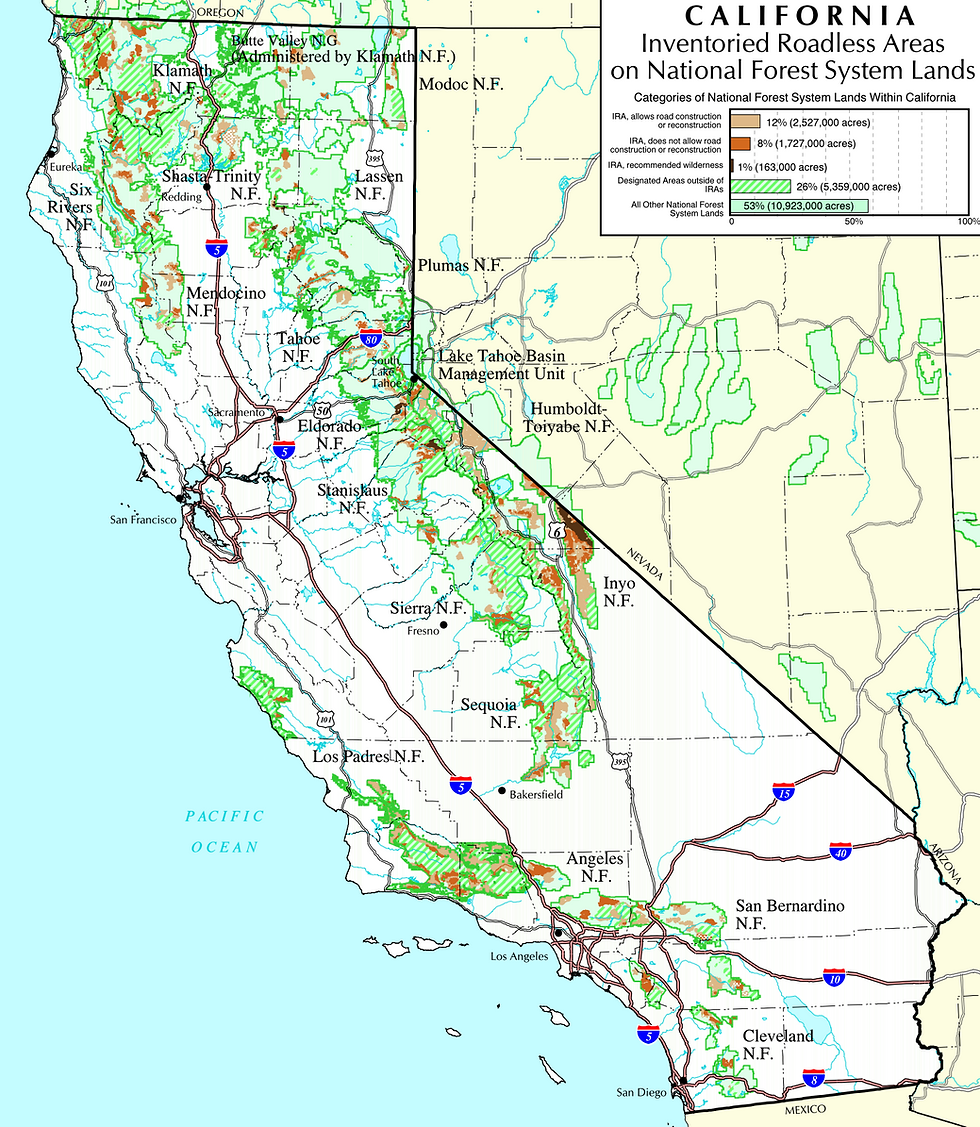EPIC Land Acknowledgment
- Matt Simmons

- Sep 14, 2021
- 3 min read
Updated: Sep 20, 2021

The Environmental Protection Information Center (EPIC) is located on the land of the Wiyot peoples including the Wiyot Tribe, Bear River Rancheria, and Blue Lake Rancheria. Specifically, EPIC is located in Goudi’ni (Arcata) which means ‘over there in the woods’. The ancestral homelands of the Wiyot people range from Plhut Gasamuli'm (Little River) in the north to Tsakiyuwit (Bear River Ridge) in the south, from Shou'r (Pacific Ocean) in the west to the first set of qus (hills/mountains) to the east. Waterways in the ancestral lands of Wiyot people include Baduwa't (Mad River), Hikshari' (Elk River), Wiya't (Eel River), and Girrughurralilh (Van Duzen River).
As an environmental organization, EPIC acknowledges that Indigenous peoples have an essential, continuous, and ongoing relationship with their ancestral homelands. The incredible landscapes and ecosystems of Northwestern California, which EPIC exists to protect, are the result of Indigenous land stewardship which has shaped these lands for millennia. We pledge to always listen to Indigenous Peoples and work with them to ensure that our advocacy is respectful, informed, and just. We pledge to engage in meaningful and effective collaborations built on recognition of Indigenous Peoples’ longstanding relationships with ecosystems in their traditional territories, and the crucial role Tribes can take in defending and protecting nature.
The previous paragraphs are EPIC’s new land acknowledgment that was developed in collaboration with a representative of the Wiyot Tribe.
Land acknowledgments are a way of recognizing the Indigenous People whose lands you or your organization exist on. If you live in America, you exist on Native lands. Those lands were taken from Indigenous people by brutal colonization. Sometimes our history books like to obscure this fact, but the truth is that the history of the settling of this country, and the state of California in particular, was incredibly violent. And these impacts are not relegated to history. We are still living with the repercussions of these acts and their effects can be seen in Native communities today. Colonization isn’t just something that happened, it’s an ongoing process.
Land acknowledgments shouldn’t only be an opportunity to educate yourself about the people whose lands you occupy. Instead, they are an opportunity to make a pledge to behave in accordance with the knowledge that you exist on Native land. Take the time to really think about what that means and how it should compel you to act. What can you or your organization do to make a difference and to help heal indigenous communities and the world we all share?
One key thing environmental organizations and advocates can do is to always remember to include and invite tribal nations to the table when taking an action that affects the tribe or their lands. Many tribes have limited capacity to participate in certain actions or discussions, but it is still important to provide a platform and space for tribes to voice their concerns. Even better, it is important for environmental organizations to view tribes as equal partners to collaborate with and provide expert knowledge in areas such as traditional ecological knowledge or land stewardship. Taking the time to reach out and notify local tribes of what you are doing as an organization is a good way to build connections that can lead to lasting change.
One current action that we encourage our members to take is to write California State Parks and encourage them to change the name of Patrick’s Point State Park to Sue-meg State Park. The State Park exists on top of the Yurok village of Sue-Meg. The village of Sue-meg holds significant cultural meaning to Yurok people and includes a ceremonial site that is actively used by contemporary Yurok People. The Yurok Tribe has requested that State Parks change the name of the park. Here is an excerpt from their statement as to why:
“The promontory, “Patrick’s Point”, is named after a man known as Patrick Beegan who held a “claim” near the area in the 1850’s during the California Gold Rush. Mr. Beegan was a part of a culture and group of people who held no remorse for the killing of Yurok People, in fact he was known to have murdered a young Yurok boy in the Chue-rey (Tsurai) area. We acknowledge that this boy and the other Native people he murdered will never fully get their justice. At the minimum we can stop honoring a known participant in the attempted genocide of Yurok people and rename the park to reflect the deeper history of the land.”
Public feedback on this potential name change will be accepted by COB Tuesday, Sept. 28, 2021. Written comments may be emailed to planning@parks.ca.gov with the words “Patrick’s Point Name Change” in the subject line. We encourage you to write State Parks and tell them to change the name of the park to Sue-Meg State Park.
For more information on developing a Land Acknowledgement, we recommend watching HSU Professor Dr. Cutcha Risling Baldy’s presentation entitled: “What Good is a Land Acknowledgement”.





Comments